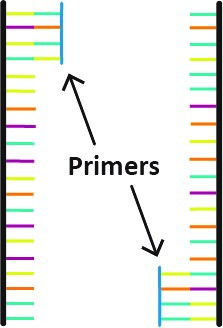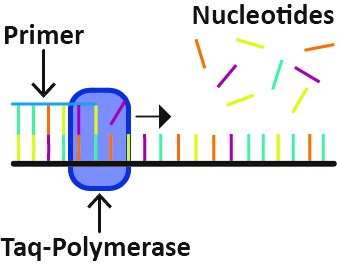Polymerase chain reaction (PCR) is a widely applied molecular tool that amplifies DNA and RNA sequences. By repetitively cloning DNA and RNA, other tools, such as gel electrophoresis, can be applied to offer simple sample analysis. PCR is employed across life sciences and is popular in genomics, forensics, and medical diagnostics. With PCR becoming a common term used for COVID-19 testing: we want to take a closer look at what exactly polymerase chain reaction is, what reagents are present, and how the AirClean® Systems PCR Workstation helps ensure a reliable and predictable result.
What is Polymerase Chain Reaction?
The polymerase chain reaction is the process of amplifying a single DNA or RNA molecule into millions of copies. DNA and RNA are the genomic markers contained in all living things. While DNA is commonly known as a tool for discovering ancestry and catching criminals, RNA is a similar genetic material seen in organisms like some viruses. DNA and RNA are genetic fingerprints providing information unique to a specific species, organism, or individual. PCR uses a targeted approach to amplify this genetic material from one to millions of copies.
To start the polymerase chain reaction process for DNA: the double helix structure must be separated to create binding sites for the primers. Using heat to denature the double helix structure can typically achieve the process. This step is known as the denaturation step and starts the amplification process.
Denaturation of DNA

Following the denaturation step, the annealing process can begin. This step uses DNA primers which act as a start point for the extension process. These primers bind to specific spots on the separated DNA strands based on the base pair interactions.
Annealing of Primers

Once the primer is attached, heat is applied and the PCR enzyme Taq-Polymerase begins to extend and replicate the strand. Taq-polymerase acts as the assembly worker, grabbing the required base pair and adding it to the primer until a replicated strand is complete.
Extension

One common term used with COVID testing is "reverse transcriptase PCR" (RT-PCR). This form of PCR uses RNA as the starting material rather than DNA. Sars-CoV-2 has a genetic marker of RNA and the reverse transcription process effectively converts RNA to DNA before completing the same denaturation, annealing, and extension steps. Now that we have a general understanding of what PCR is, we can look at the reagents used and their role in the process.
PCR Reagents and Concerns
The list below provides some of the common reagents used in PCR analysis and their functions:
- Primer – Targets a DNA or RNA section for amplification.
- DNA Polymerase – Enzyme that works to assemble new strands.
- dNTPs – Phosphate nucleotide bases adenine, guanine, thymine, and cytosine which serve as the basic building blocks of DNA
- Buffer – Keeps pH conditions favorable for the reaction.
- Magnesium Salt – Works with DNA polymerase to remove phosphates from dNTPs operating as a cofactor to speed up the reaction.
Each of these components plays a role in amplifying DNA or RNA in the PCR process and helps form what is known as the master mix. Caution is required to prevent cross-contamination between samples or contamination from the environment when preparing the master mix.
In the case of forensics, the starting DNA sample may only render one opportunity at amplification. If foreign DNA or debris is introduced in the process, this can ultimately lead to an inconclusive or false result after amplification. If there is not enough evidence to collect another sample, this can be the difference between accurately closing a case or letting a criminal go free.
Diagnostic testing also relies on PCR when looking for the presence of disease or viruses in a sample. In the case of Sars-CoV-2, the introduction of contamination to the master mix from lab staff can lead to inaccurate or inconclusive results.
AirClean® Systems PCR Workstation
The AirClean Systems PCR Workstation helps prevent cross-contamination between samples and the introduction of contamination. The Workstation uses HEPA filtration and a positive pressure environment. These work together to bathe the countertop in turbulence-free laminar, ISO 5 clean air, keeping master mixes reliable, and conserve reagents in the lab.
The built-in UV light ensures a clean area by disinfecting the work surface and pipette tips before use and guarantees a contaminant-free environment to prepare your mix. The interior also offers a shelf for quick storage of pipette tips. The rolled polycarbonate design reflects this powerful UV-C irradiation and prevents exposure to the operator. The UVTect controller and automatic safety switch will disengage when the sash is opened and provides easy adjustment of the UV-C irradiation time.
The AirClean Systems PCR Workstation keeps master mixes free of cross-contamination during the preparation and manipulation of nucleic acid and PCR reagents. The Workstation saves everyone lab time and money from retesting samples and wasted reagents.